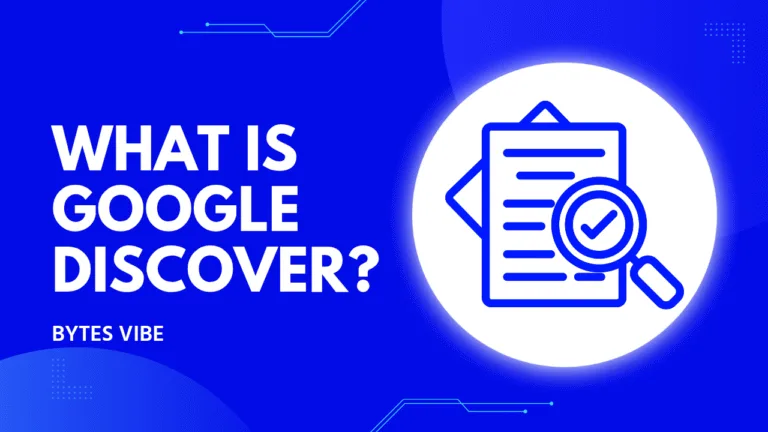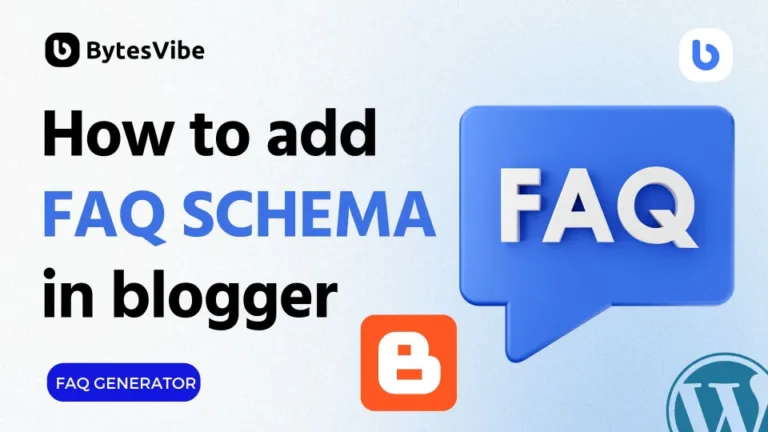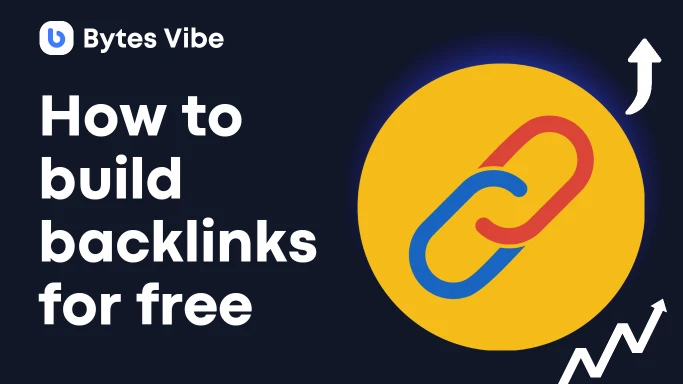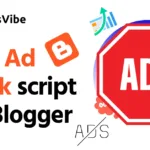Over the past few years, Tailwind CSS has become one of the most talked-about tools in web development. If you’re part of the growing web design or blogging community—whether you’re building a site on WordPress, customizing a Blogger template, or using modern AI website builders like Loveable AI – you’ve probably noticed something interesting: almost every AI design tool now outputs websites using Tailwind CSS. But why?
At Bytes Vibe, we help people understand not just how to use tools, but why they matter. So today, let’s break down in simple, real language why AI loves Tailwind CSS – and why you should start paying attention to it too.
Tailwind CSS: A Quick Introduction for the Curious

Tailwind CSS is a utility-first CSS framework. That sounds a little technical, but here’s what it really means: instead of giving you pre-designed components like “buttons” or “cards” (like Bootstrap does), Tailwind gives you small, reusable CSS classes like text-center, bg-red-500, p-4, and so on. You can mix and match these classes directly in your HTML to build completely custom designs—without ever writing a separate CSS file.
It’s fast. It’s flexible. And it puts the design power entirely in your hands.
Why AI Tools Choose Tailwind Over Everything Else
When you use an AI-based website builder like Loveable AI or Locofy, you’re asking a machine to generate human-level design. To make that possible, the AI needs a system that’s logical, consistent, and easy to learn. Tailwind CSS checks all those boxes.
Unlike traditional CSS frameworks where every component can have a different structure or custom styles hidden in separate files, Tailwind keeps everything in one place: the HTML itself. This helps AI tools generate faster and cleaner code. There’s no confusion about where a certain style is coming from, because the style is right there in the class name. For example, if an AI tool wants to make text larger and blue, it just adds text-xl and text-blue-500. That’s it.
This system is also perfect for machine learning models. AI tools are trained using massive datasets. Tailwind’s structured naming system makes it easy for these models to understand and predict which class to use next. For example, if the AI sees bg-, it knows it’s dealing with a background color. If it sees text-, it’s styling typography. These predictable patterns are much easier for AI to generate compared to custom CSS styles that vary from project to project.
How Tailwind’s Class Naming Helps AI Generate Better HTML
AI tools are designed to generate websites that not only look good but also work across devices – desktop, tablet, and mobile. Tailwind makes this easy by following a mobile-first design approach. That means the styles you write apply first to smaller screens and then scale up using responsive modifiers like sm:, md:, and lg:. So when an AI tool generates a layout, it can apply different styling for each screen size without writing messy or complex CSS media queries.
This is a huge reason why tools like Builder.io and Wix AI Builder also lean toward Tailwind-style design. It makes responsive, modern websites possible with just a few simple class combinations.
Also, because all the styles are in the HTML, the final code is more portable. You can take a Tailwind section generated by AI and paste it into WordPress, a custom HTML template, or even a Blogger theme—and it will work the same everywhere. That’s a dream come true for non-coders who want creative freedom without diving deep into complex code.
Tailwind CSS Improves Core Web Vitals
In today’s SEO-focused world, page speed is not just a nice-to-have feature—it’s a ranking factor. Google considers website performance as part of its Core Web Vitals. The good news is that Tailwind is built with performance in mind.
When you use Tailwind in a real project, especially through a tool like Vite, Next.js, or even a WordPress block builder, unused classes can be removed automatically in production. This means your final CSS file includes only the styles your site actually uses. No extra bloat. No hidden styles. The result? A lightning-fast website that scores better in performance tests—and better performance often means better SEO.
AI tools know this too. That’s why most of them are now generating Tailwind-based code. A fast-loading website keeps users happy, reduces bounce rates, and improves your site’s chances of ranking on Google. This is especially important for affiliate sites, landing pages, and e-commerce stores.
Tailwind for Bloggers, WordPress Designers, and Non-Coders
If you’re running a WordPress blog, a small business website, or even a personal portfolio, Tailwind can be your best friend—even if you’re not a developer.
Imagine this: you go to Loveable AI, describe the kind of section you want, and it gives you ready-made Tailwind HTML. You just copy and paste that into your WordPress HTML block. No need to install bulky themes or mess with page builders. If you’re using Blogger, you can do the same inside your template editor. It just works.
You don’t even need to write Tailwind classes yourself. There are tools like Tailwind UI, Flowbite, DaisyUI, and hundreds of GitHub projects where you can find pre-built components—many of which were generated or optimized by AI. These are clean, responsive, and SEO-friendly.
Tailwind + AI = The Future of Web Design
Let’s be honest. AI is not here to replace web designers or bloggers—it’s here to assist them. And Tailwind CSS is the perfect companion for AI-assisted web design. Together, they’re transforming how websites are built: faster, smarter, and more customizable than ever before.
If you’re just getting into website design, don’t skip Tailwind. It’s beginner-friendly once you understand the basics, and it gives you full control over your layout and design. Combined with AI tools, it can help you build beautiful, SEO-optimized websites in minutes—not days.
Final Thoughts from Bytes Vibe
Here at Bytes Vibe, we’re always exploring tools that make life easier for creators, bloggers, and developers. Tailwind CSS is not just a trendy framework—it’s a core part of modern web development, especially as AI becomes more involved in how websites are designed.
Whether you’re customizing your next WordPress theme, experimenting with a Blogger layout, or using AI to create a landing page – Tailwind CSS is the secret sauce behind fast, responsive, and beautiful designs. The fact that AI tools are embracing it so quickly just confirms what many developers already know: Tailwind is the future.
So if you haven’t already, take some time to explore Tailwind. Try using it with AI design tools. Practice customizing the output. Play around with your layouts. Once you get comfortable with it, you’ll see why it’s the framework of choice – not just for AI, but for the future of web development.










